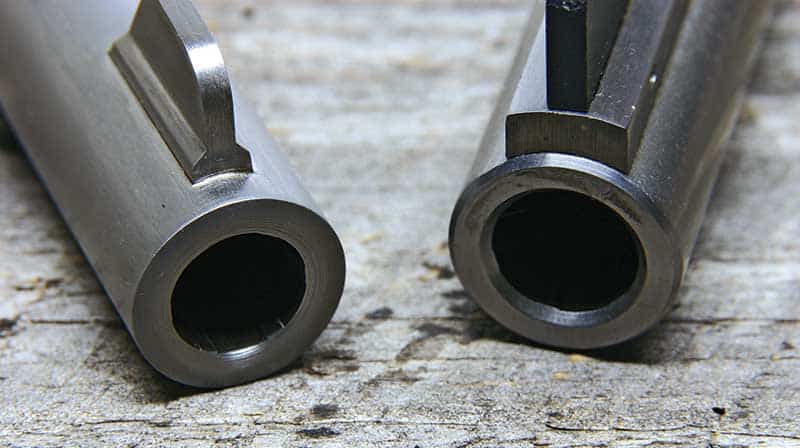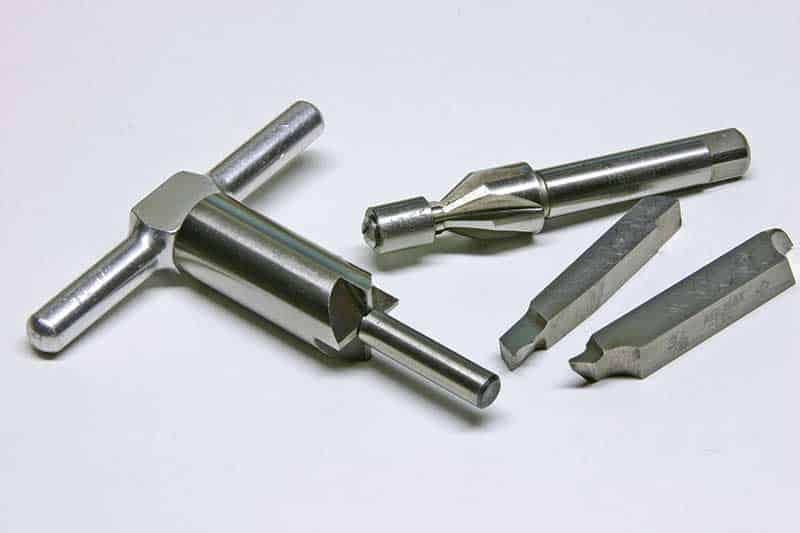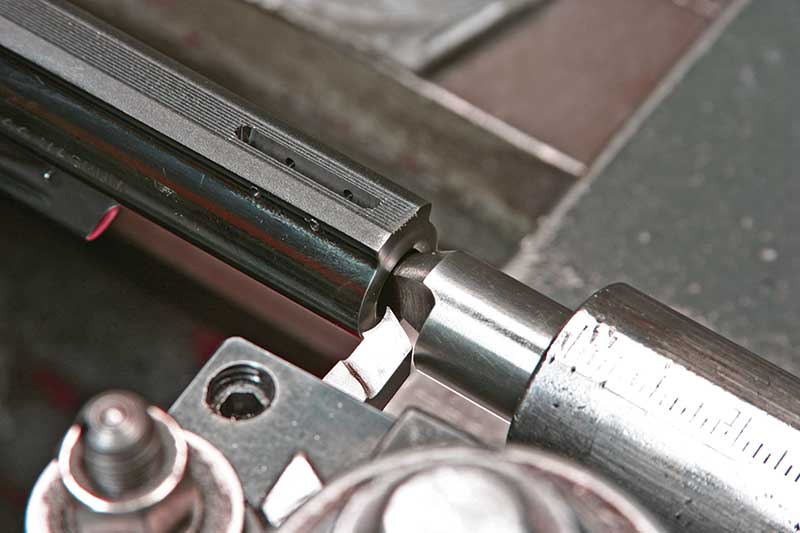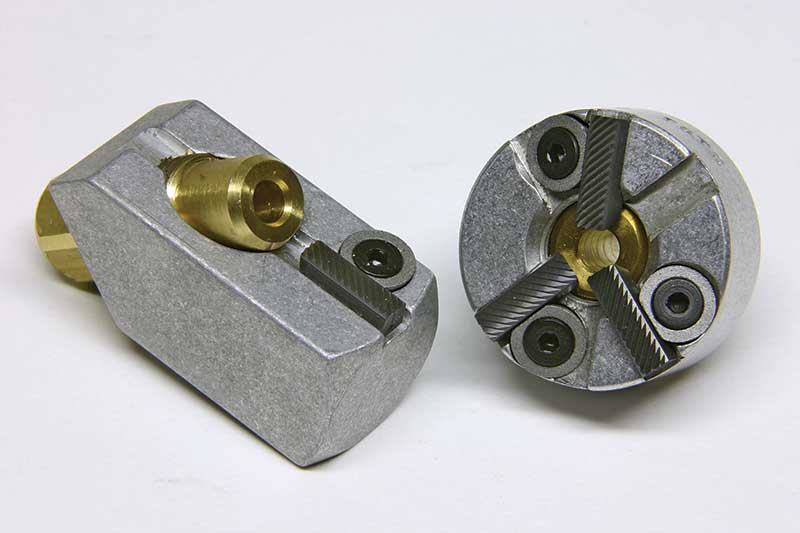Ordinarily, most modern firearms feature precisely machined crowns that rarely ever give trouble, but the Ruger barrel had just been rebored and the bullets were now emerging from a flat crown that showed the usual ground/polished crown of the times. Without the usual 60-degree inner chamfer that trued up this surface, the remaining flat crown was hopelessly out of square and gave the predictably awful results. The moral of the story is simple: When all else fails, check the crown.
A barrel’s crown is a small thing, but a poorly executed crown on any rifled barrel will have a devastating effect on accuracy. While I do not profess to have a thorough understanding of the dynamics of bullets exiting barrels, it requires little mental heavy lifting to recognize the problem. If the entire circumference of the heel of a bullet doesn’t exit the barrel at exactly the same time, subtle variations in gas pressure bearing on the bullet’s base and pressure from the barrel itself on the bearing area of the bullet can cause the bullet to tip slightly off its axis when it exists the barrel. Once tipped, the bullet will tend to wander off course more than usual. In short, the crown must be as square as possible with the bore axis.
The Crowning Act
Some years ago, the shop had completed a nice little Old Model Ruger revolver caliber conversion with dedicated .44 Russian chambers. If ever a gun should have shot well, this should have been it. Alas, on the first trip to the range, I would have been lucky to hit myself in the foot. There was no accounting for the awful accuracy.
The rebore from Delta Gun Shop look great. It ranged perfectly. The forcing cone was in spec. Our reamer had a throat section of around .430″ which was spot on. Factory ammunition from Black Hills admitted no problems. I simply could not figure out why this gun shot so poorly. Giving it yet another hard look and thinking to myself the muzzle looked a bit odd, it finally dawned on me I had not yet crowned the barrel.
Crowning operations are commonly done when making custom barrels from blanks, shortening existing barrels, putting a rebored barrel back into service or simply pursuing mysterious accuracy problems. Getting the crown good and square is not complicated, but does require some precisely made tools to achieve satisfactory results. This is one operation that can’t be conducted out of your back pocket with a Leatherman tool. Crowning gear ranges from simple hand tools to precision machine shop equipment. What you use will depend on the sort of crown your particular application requires.
If you need only chase the inner chamfer on an existing crown just to make sure it is square, there are a couple of tools available. Brownells muzzle and cylinder facing and chamfering tools are versatile and affordable. I prefer to use the more standard 60-degree chamfers, so use a piloted countersink driven by a T-handle tap wrench. Most makers provide pilot bushings in .0005″ increments so it is not difficult to get a perfect fit for a specific bore, vital to a smooth, chatter-free cut. Most professional shops who are regularly engaged in barrel work will perform this operation on a lathe between the tool and a center but the barrel must be removed from the receiver.
If you are also cutting a barrel and need to face the end of the muzzle as well, there are several alternatives. The simplest procedure is to start with a file, then true up with a simple piloted facing tool. For real tool junkies or mere for-profit enterprises, the Muzzle Crown Refacing Tool from Manson Precision Reamers is beyond cool. Developed by Boris Teper, a Russian émigré with a PhD in automotive engineering, the cutting heads use carbide inserts piloted by an adjustable internal expanding collet-type mandrel. It even has a brush to help keep chips out of the action and clean out the bore afterwards. The facing cutters are available with both flat and 11-degree styles. There is also a cutter for an exterior bevel. The flat crowns are typically chamfered internally with the usual 45- or 60-degree chamfering tools to complete the job.

Major components of the Manson tool are the carbide insert cutters (above), which are
precisely aligned in the barrel with the expanding mandrel pilot. These sophisticated
Manson cutters (below) feature removable carbide inserts for smooth, chatter-free cutting.
On the left is the outside chamfer cutter, on the right, the flat facing tool.
While flat or 11-degree inverted crowns are all well and good, vintage-style guns demand a radiused crown. This is where your $20K crowning tool (engine lathe) comes in handy. If there are any simple hand tools for producing this crown, I am unaware of them. These crowns are cut by starting with a flat crown with an internal chamfer to guide a half center in the lathe tailstock, then carefully formed with a specially ground lathe tool with a radiused cutting surface. The half center provides a small and necessary window of access to the edge of the bore with the tool, while still keeping the barrel turning precisely on its axis. Flat, recessed target-style crowns popular on precision rifles are also typically machined on a lathe, usually run in some combination of 4-jaw chucks on each end of the spindle or centers and a steady rest.
Barrel crowns are an essential part of good accuracy and while they are rarely out of kilter, fixing and forming them need not be a costly or complicated exercise. The procedures are not beyond the means and abilities of most serious hobbyist gunsmiths.
Manson Precision Reamers
8200 Embury Rd.
Grand Blanc, MI 48439
(810) 953-0732
mansonreamers.com
Brownells
200 S. Front St., Montezuma, IA 50171
(800) 741-0015
www.brownells.com







